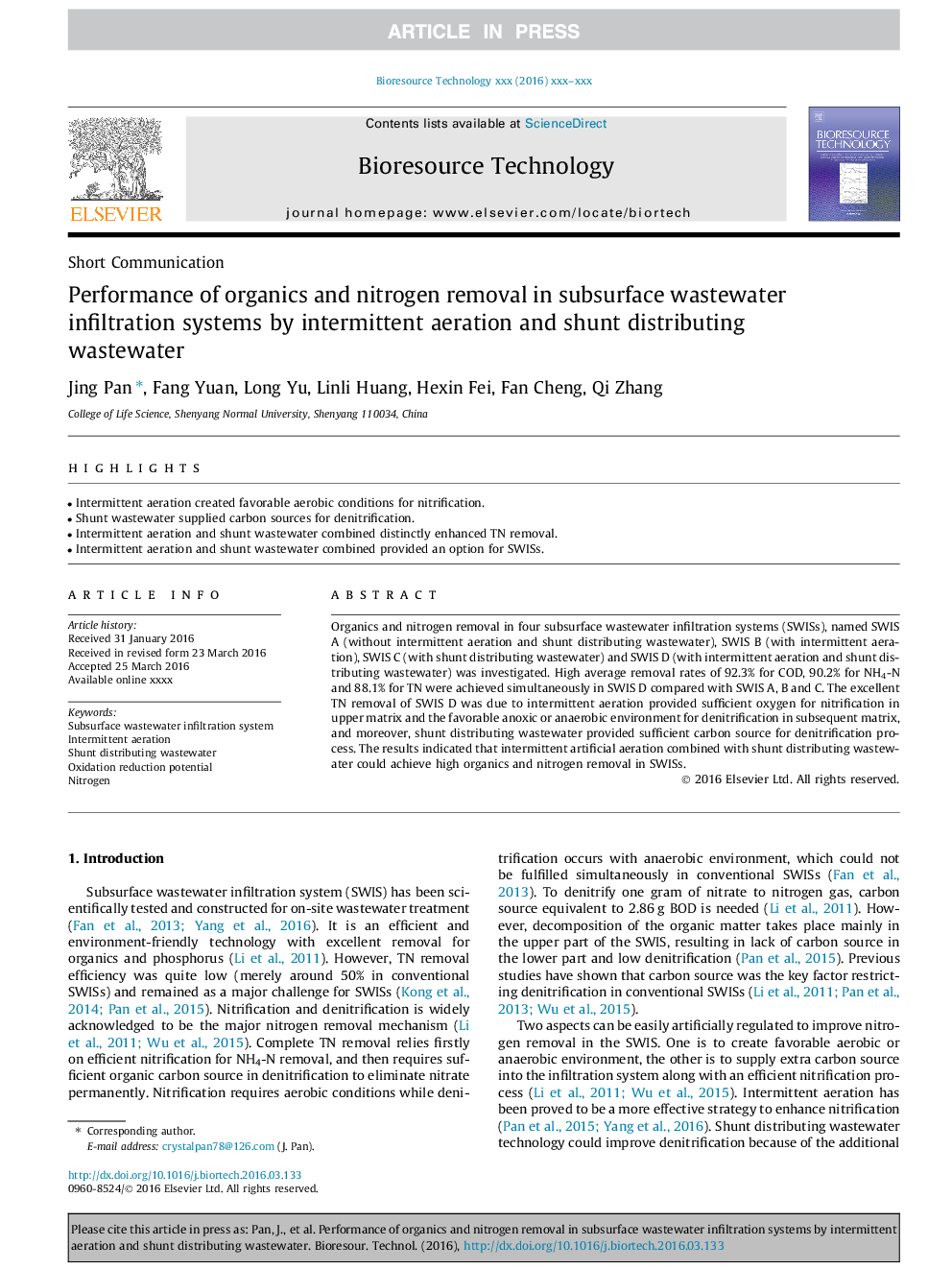| Article ID | Journal | Published Year | Pages | File Type |
|---|---|---|---|---|
| 7072062 | Bioresource Technology | 2016 | 5 Pages |
Abstract
Organics and nitrogen removal in four subsurface wastewater infiltration systems (SWISs), named SWIS A (without intermittent aeration and shunt distributing wastewater), SWIS B (with intermittent aeration), SWIS C (with shunt distributing wastewater) and SWIS D (with intermittent aeration and shunt distributing wastewater) was investigated. High average removal rates of 92.3% for COD, 90.2% for NH4-N and 88.1% for TN were achieved simultaneously in SWIS D compared with SWIS A, B and C. The excellent TN removal of SWIS D was due to intermittent aeration provided sufficient oxygen for nitrification in upper matrix and the favorable anoxic or anaerobic environment for denitrification in subsequent matrix, and moreover, shunt distributing wastewater provided sufficient carbon source for denitrification process. The results indicated that intermittent artificial aeration combined with shunt distributing wastewater could achieve high organics and nitrogen removal in SWISs.
Keywords
Related Topics
Physical Sciences and Engineering
Chemical Engineering
Process Chemistry and Technology
Authors
Jing Pan, Fang Yuan, Long Yu, Linli Huang, Hexin Fei, Fan Cheng, Qi Zhang,
